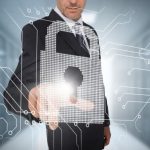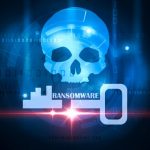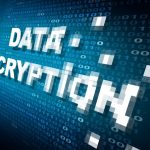How deep learning can deliver improved cybersecurity [Q&A]

Traditional cybersecurity isn't necessarily bad at detecting attacks, the trouble is it often does so after they have occurred.
A better approach is to spot potential attacks and block them before they can do any damage. One possible way of doing this is via 'deep learning' allowing technology to identify the difference between good and bad.
Why enterprises are struggling with their digital transformation projects [Q&A]

We recently reported on research from value stream platform Digital.ai into digital transformation projects, which should make worrying reading for many enterprises.
The study showed that many organizations feel they're not getting the most from their transformation projects. We talked to Gaurav Rewari, chief technology officer at Digital.ai to find out why this is happening and what can be done about it.
How mismatched incentives create problems for development [Q&A]

Site reliability engineering (SRE), SecOps and developer teams are all supposed to be on the same side.
But mismatches in incentives between these groups can lead to challenges surrounding how and what information is shared across siloed teams. This creates a hazard where one team can shift deployment risk to another team, with no accountability back to the originating team.
The challenges of securing the modern enterprise [Q&A]

In recent months there have been many high profile attacks using ransomware and other techniques, against businesses.
But why has there been an apparent upsurge in attacks and what should enterprises be doing to keep them selves safe? We talked to Lynx Software Technologies' vice president of product management, Pavan Singh to find out.
Why enterprises need to prepare for more insider threats [Q&A]

Insider threats are a growing problem. In its 2021 predictions, Forrester believes that insider incidents will be the cause of 33 percent of data breaches in 2021, up from 25 percent in 2020.
But what does this mean in practical terms for businesses and how can they protect themselves? We spoke to Anurag Kahol, CTO of cloud security specialist Bitglass, to find out.
What does Apple's enterprise growth mean for IT administrators? [Q&A]

The use of Apple devices in the enterprise has grown exponentially over the past year. In fact, a recent report from IDC showed that macOS was the operating system of choice for 23 percent of computers at US companies with 1,000 employees or more in 2020, up from 17 percent in 2019.
As businesses continue to adopt Apple devices at work, Mosyle CEO Alcyr Araujo, wants to highlight how to seamlessly deploy, manage, maintain and protect these devices at scale. He believes simple, intuitive and automated mobile device management (MDM) and endpoint security are the key to solving new endpoint management and security challenges, we spoke to him to find out more.
Why ransomware is on the rise and how organizations can protect themselves [Q&A]

Many high profile attacks in recent months have involved ransomware, notably the Colonial Pipeline attack. Worryingly some businesses seem willing to pay the ransoms too.
But why are these attacks on the rise and what can businesses do to protect themselves against them? We spoke to Clumio CEO, Poojan Kumar to find out.
The encryption technology that's revolutionizing secure data usage [Q&A]

Conventional encryption methods rely on the exchange of keys. This can leave them vulnerable, particularly when they're used on public cloud services.
One way around this is to use homomorphic encryption, this permits third party service providers to perform some types of operations on a user's data without needing to decrypt it.
Why businesses need to look to a new technology model post pandemic [Q&A]

Aging infrastructure, legacy tools and outdated strategy. Businesses today that have one or more of these issues are quickly realizing that they're not set up for success.
As we start to see signs that the pandemic is getting under control in some places, many companies are finding themselves faced with the reality that they were ill prepared to handle the tumultuous nature of the past 12 months. Those who've struggled to make it this far are realizing it's time for more than just a refresh of their old systems. A new approach is needed.
Why the human factor is key to cybersecurity [Q&A]

There are many things to consider when it comes to making systems secure, but one thing that is often overlooked is the human angle.
George Finney, CISO, CEO and founder of Well Aware Security believes that cybersecurity is a people problem first and foremost -- people are the ones who write and employ processes and people are the ones who create and use technology. No surprise then that people are behind some 95 percent of cybersecurity incidents.
The normalization of data leaks and the privacy paradox [Q&A]

Is society becoming too accepting of data breaches? Do we claim to want more privacy but then continue to treat our own data in a cavalier fashion?
A recently leaked internal memo from Facebook revealed the company's plans to normalize data scraping leaks and change the way the public views these incidents.
How an open charging network could boost EV adoption [Q&A]

Although there has been a surge of interest in electric vehicles brought about by governments legislating to phase out internal combustion power, many people are put off by the difficulties of charging, made more of a challenge by the number of different networks each needing its own app, card or token.
A new company EVPassport wants to build an open charging network, allowing EV drivers to use an API-based system integrated into an app like Google Maps, or simply scan a QR code on the charger. We spoke to its CEO and co-founder, Aaron Fisher to find out more.
Why the CI/CD pipeline is vulnerable to attack [Q&A]

Recent high-profile supply chain attacks such as SolarWinds have highlighted how vulnerable the software development pipeline can be.
To find out more about why the CI/CD pipeline is particularly vulnerable to attacks and what can be done to prevent them, we spoke to Vickie Li, developer evangelist at ShiftLeft, which has just launched a new product, ShiftLeft CORE, aimed at reducing risk to the software code base.
Why Istio is winning the open source service mesh race [Q&A]

In recent years the use of microservices has helped to streamline development processes. But there's still an issue with managing communication between services.
Service mesh is a technology that adds uniform networking capabilities right across the program stack but is decoupled from the application code itself.
How government agencies are adapting to remote working [Q&A]

The last year has seen all businesses facing a major shift as employees have been forced to work from home.
Government agencies have been no exception to this, but they have specific issues relating to handling sensitive data. Last month the US Department of Agriculture (USDA) announced a plan to expand remote work options and other agencies are expected to follow suit.
Recent Headlines
Most Commented Stories
© 1998-2025 BetaNews, Inc. All Rights Reserved. About Us - Privacy Policy - Cookie Policy - Sitemap.